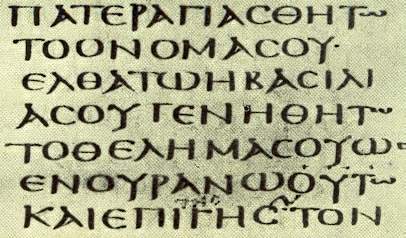Destruction of texts and deification of Jesus
Destruction of texts and deification ofJesus
By
Dr. Zineb Abdelaziz
Professor in French Civilization
Tony Bushby said in his book entitled “The Bible Fraud” that his study to the version of the Holy Bible known as (Codex Sinai), the oldest version of the Holy Bible that discovered in Sinai which was said that it was dated back to the fourth century, demonstrated 14800 contradictories to the present the Holy Bible. Accordingly, this proves how much changes and modifications such book really suffers from.
The researcher confirmed that no one can know the real condition of the original texts of this book due to the multiple changes and falsifications occurred in it. It is sufficient to indicate that in 1415, the church of Rome took an extraordinary step to destroy all knowledge of two Second Century Jewish books that it said contained ‘the true name of Jesus Christ‘.
Pope Benedict XIII destroyed a Latin treatise entitled “Mar Yesu (Lord Jesus)” and then issued instructions to destroy all copies of the Book of Elxai. It was comprehensive original records reporting the ‘Life of Rabbi Jesus’ (the alleged).
Later, in a similar manner, Pope Alexander VI ordered all copies of the Talmud destroyed with the Spanish Grand Inquisitor, Tomas de Torquemada (1420 –1498), who was responsible for the elimination of 6000 volumes at Salamanca alone. In 1554, Solomon Romano also burnt many thousands of Hebrew scrolls and in 1559 every Hebrew book in the city of Prague was confiscated. The mass destruction of Jewish books included hundreds of copies of the Old Testament and caused the irretrievable loss of many original hand-written documents that go against or expose the actions of church at that time.
| Image of a piece of the Sinai manuscript of the Bible |

Furthermore, Tony Bushby said: “The oldest text of the Old Testament that survived, before the discovery of the Dead Sea Scrolls was said to be the Bodleian, which was dated to circa 1100 AD. In an attempt by the church to remove Rabbinic information about Jesus Christ from the face of the earth, the Inquisition burnt 12,000 volumes of the Talmud.
The author pointed out that work began early in 1607 and took a committee of forty-seven men (some records say fifty-four) two years and nine months to rewrite the Holy Bible in English and make ready for the press. It was, by the order of King James, issued with a set of personal 'rules' the translators were to follow. Upon its completion in 1609, it was handed over to King James who passed the manuscripts on to Sir Francis Bacon". He (Sir Francis Bacon) spent nearly a year editing before publishing.
Tony Bushby added: “The King James Bible is considered by many to be the ‘original’ Bible and therefore ‘genuine’ and all later revisions simply counterfeits forged by ‘higher critics’.
However, the Greek text, that is used in the English translation and that many deem it original, was not written until around the mid-Fourth Century and was a revised edition of writings compiled decades earlier in Aramaic and Hebrew. Those earlier documents were all burnt and the Holy Bibles we have today of King James are five linguistic removes from the first Bibles written. What was written in the ‘original originals’ is quite unknown.
By the early third century, politics intervened greatly in the track of Christianity that traveled in its journey among the opposing factions and conflicting sects. According to Bishop Albius Theodoret (circa 255), there were "more than two hundred" variant gospels in use in his time.
When Emperor Constantine conquered the East in 324, he sent his Spanish religious advisor, Osius of Cordoba, to Alexandria with letters to several Bishops exhorting them to make peace among their own regarding their belief. This really indicates that the doctrinal disagreements were common at that time. But the mission failed, and then Constantine issued a decree commanding all bishops to attend and bring with them the manuscripts which they use. The first general church council was thus convened and the year was 325. It was held in Nicaea to settle down all common differences regarding the deification of Jesus.
On 21 June of 325, a total of 2048 deacons gathered at Nicaea to decide what Christianity really was, what it would be, what writings were to be used and who was to be its God.
Tony Bushby also said: “Ancient church evidence established that a new 'god' was to be approved by the Roman Emperor and an earlier attempt (circa 210) to deify either Judas Khrestus or his twin brother Rabbi Jesus (or somebody else) had been 'declined'. Therefore, as late as 325, the Christian religion did not have an official god.”
He then explained: “After a long and bitter debate, a vote was finally taken and it was with a majority show of hands that Judas Khrestus and Rabbi Jesus both became God (161 votes for and 157 votes against). The Emperor effectively joined elements of the two individual life stories of the twin brothers into a singular creation. A deification ceremony was then performed 'Apotheosis'. Thus the deified ones were then called 'Saviors'. The Emperor Constantine then instructed Bishop Eusebius to compile a uniform collection of new writings "bound together as one". Eusebius was to arrange for the production of "fifty sumptuous copies…”


